To my other TR6 pages
April 21, 2019
Odds & Ends II
So, the weather here on the prairie is getting better, and I'm really itching to get this car on the road soon.
I
started by trying to get a finer tune on the carbs. The car
started, ran, and sounded fine with the initial carb settings I made
when I rebuilt them, but I thought maybe I could tweak them some.
I started by synchronizing the throttles, which allegedly
equalizes the flow through the two carbs.. Many people do this by
ear with a plastic tube in the carb throats. I chose to use
machinery to do it. I used a Unisyn, which is placed over the
mouth of a carb, and indicates the flow into the carb by a ball
floating in a clear tube. This pretty easily allows the linkage
to be adjusted so that both carbs flow the same amount of air, at least
at idle.
For
setting the mixture, I had a few things I wanted to try. But
first, I needed my needle adjustment tool, which of course was AWOL.
This would stop me in my tracks, so I was forced to improvise.
I remembered what the tool looked like, and I could take all the
necessary measurements from the carbs, so this was the home-made result.
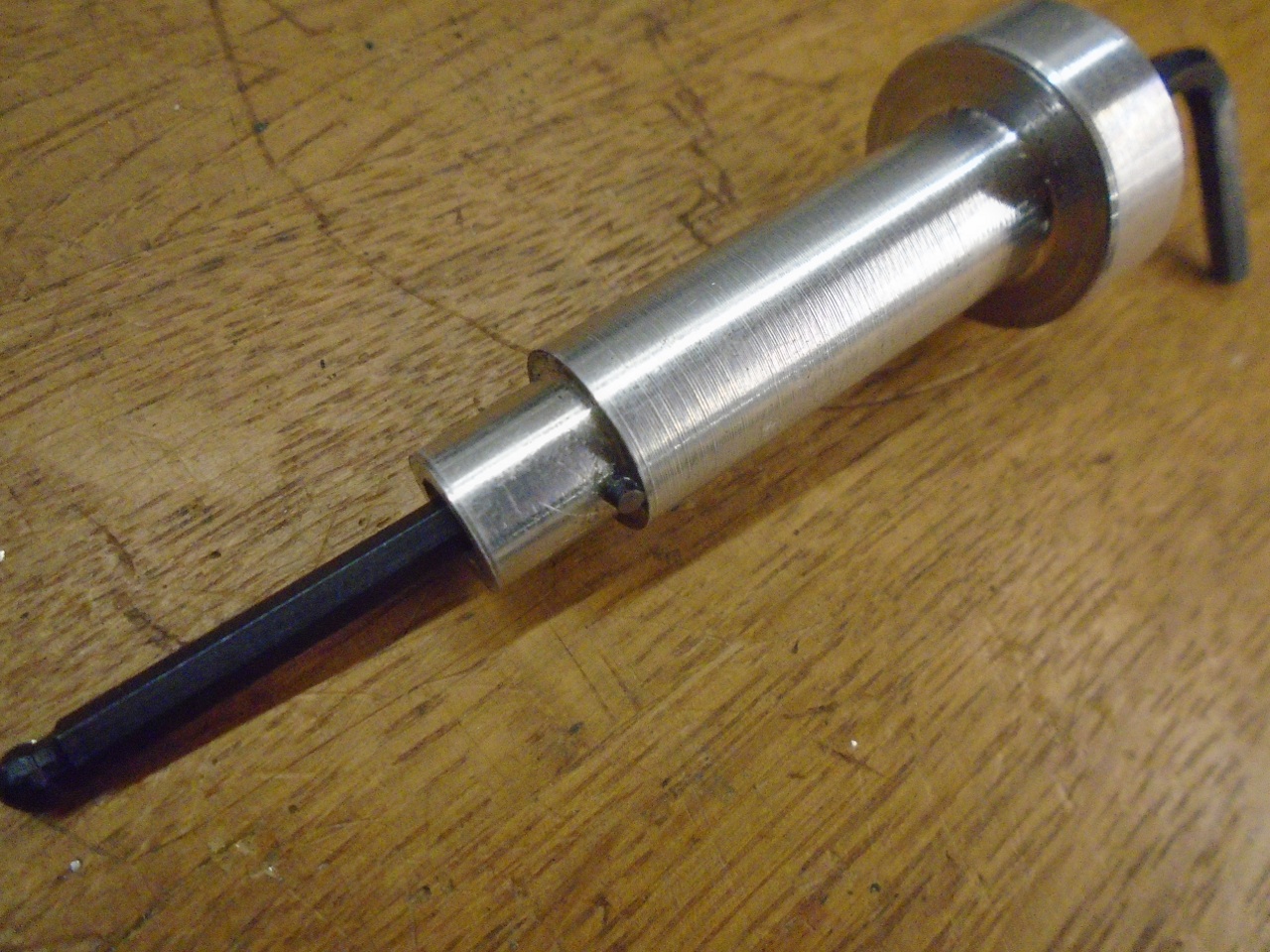
One
well known technique to set carb mixture is to slightly lift the air
valve and note how the engine speed changes. This didn't really
work for me, and I've read that it really only works reliably for a
stock engine.
The
next thing I tried was reading my oxygen sensor outputs. The
voltage produced by an oxygen sensor is an indication of air/fuel
ratio. I didn't have a true A/F readout, but since I knew pretty
well what output voltage coresponded to what A/F ratio, I just made up
a little dual voltage readout to the show the voltage from each of the
two sensors.
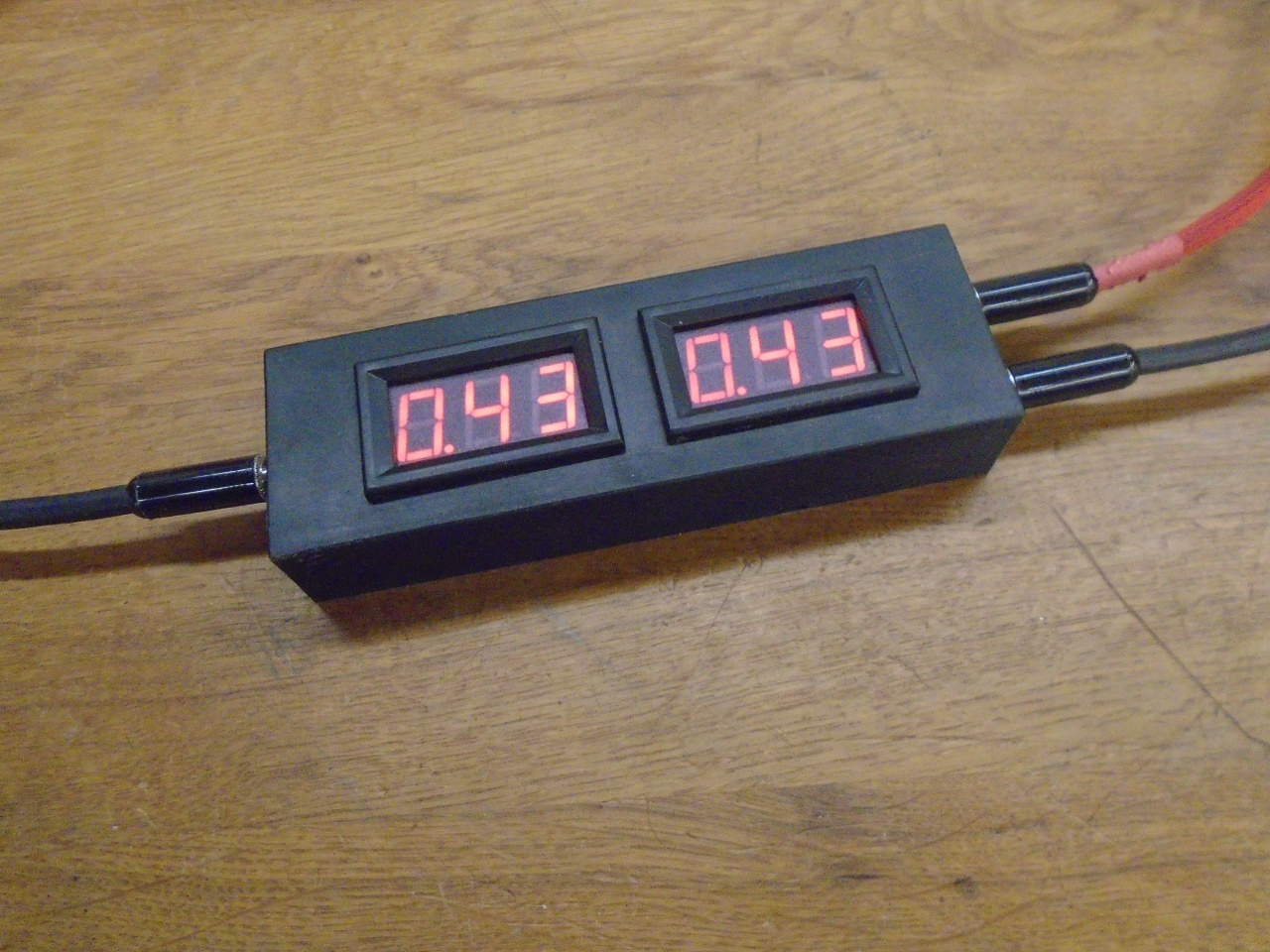
For
this, too, I had a hard time getting consistent reaults. Since my
oxygen sensors were handled a lot during the mockup and fabrication of
the bungs in the exhaust downpipe, I suspect one of them may be
damaged. I may pursue this more in the future.
In
the end, I decided that since the engine seemed to be running so well
at the initial setting, that I would just leave it there for now, and
read the plugs after a little mileage.
At this point, I could button up my trick air box.
I dug out the Ramflo filters I bought. Each filter consists
of a base plate, a dome-shaped foam filter element with a plastic
support that fits inside, and an expanded metal cover. This
arrangement takes two pairs of gaskets, so one pair in the picture is
home made.
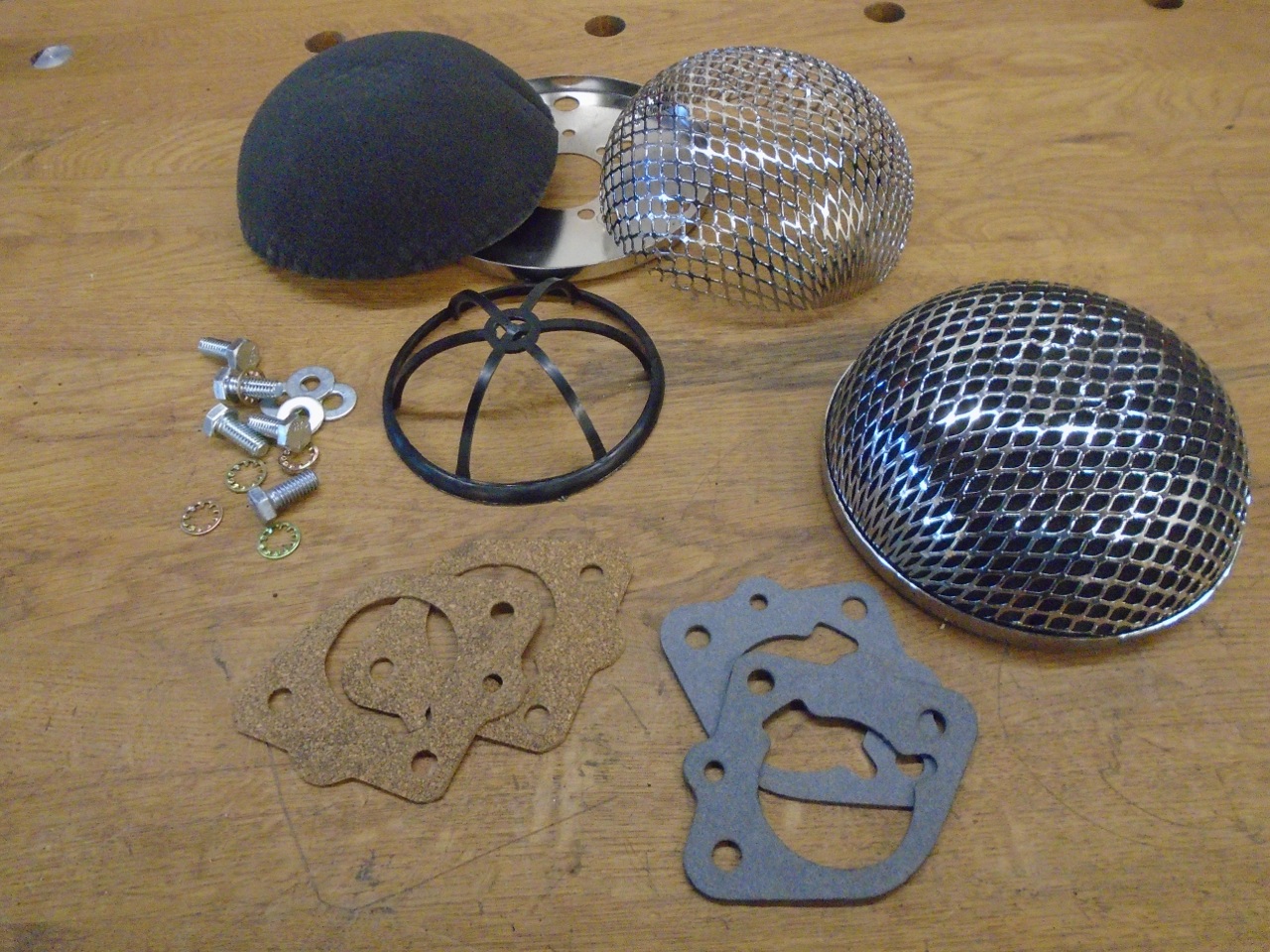
The
base plate fasteners go through the air box and into threaded holes in
the carb flange. Considering where these fasteners are, safety
wire seemed like a good idea.
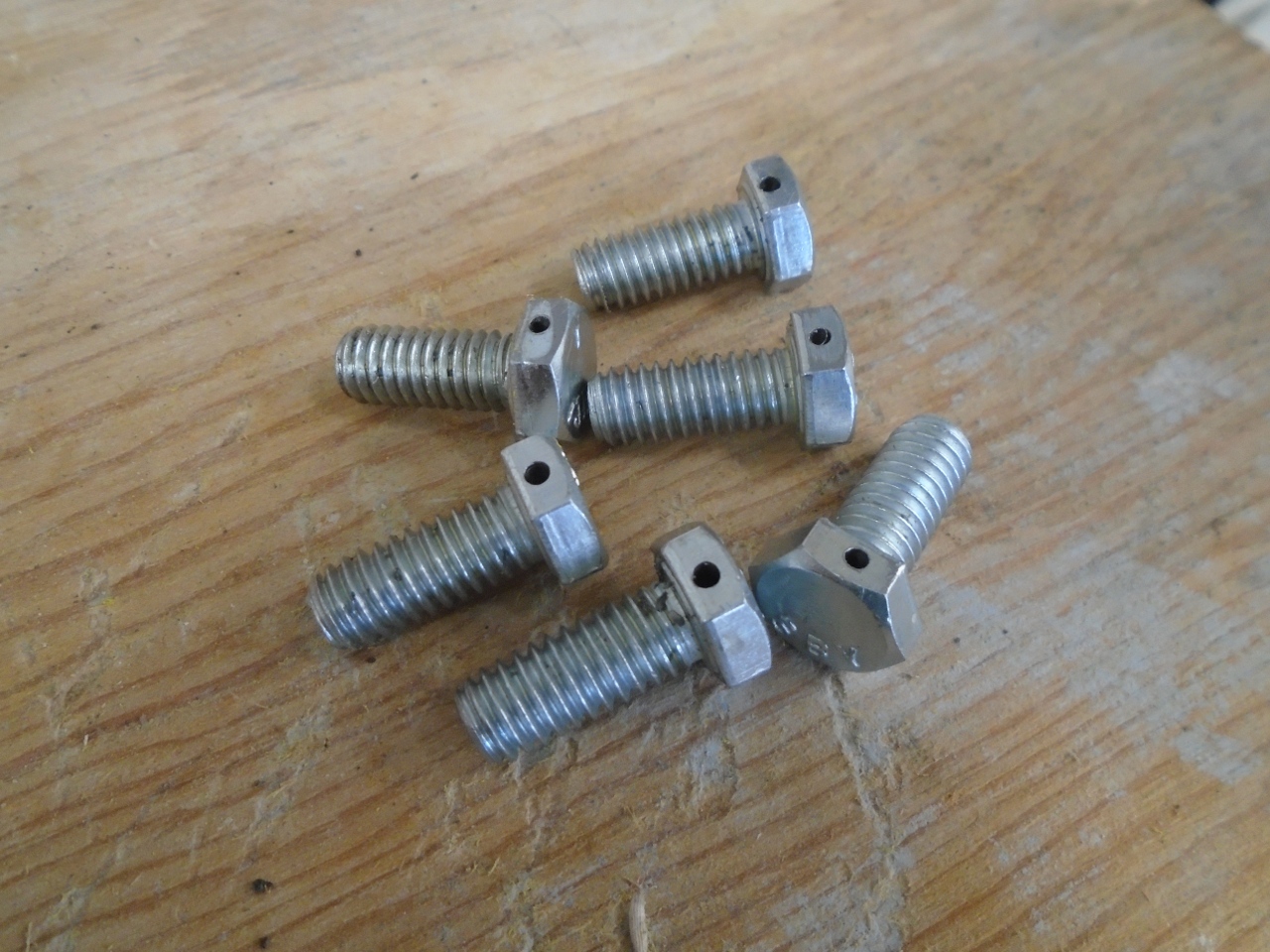
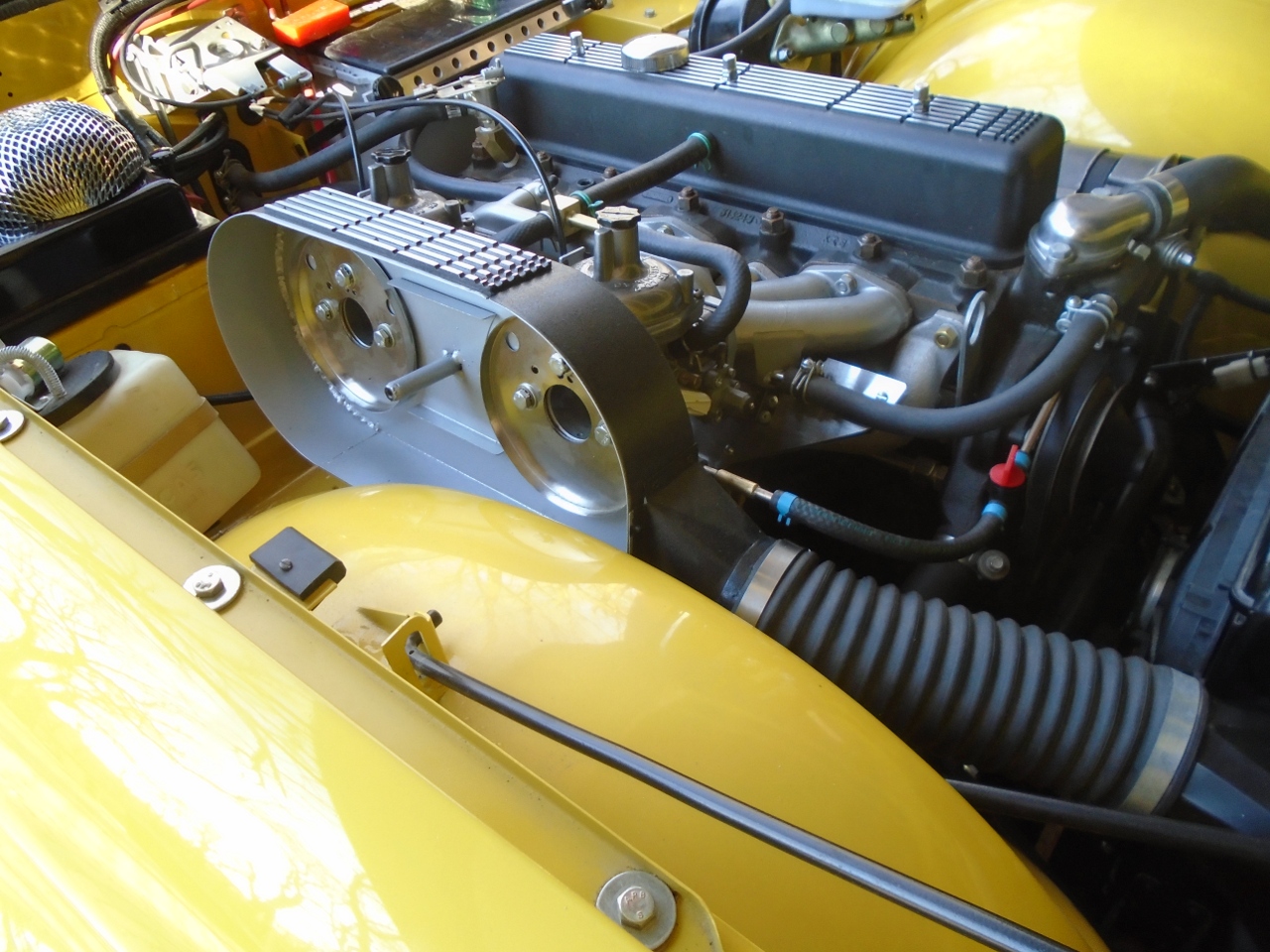
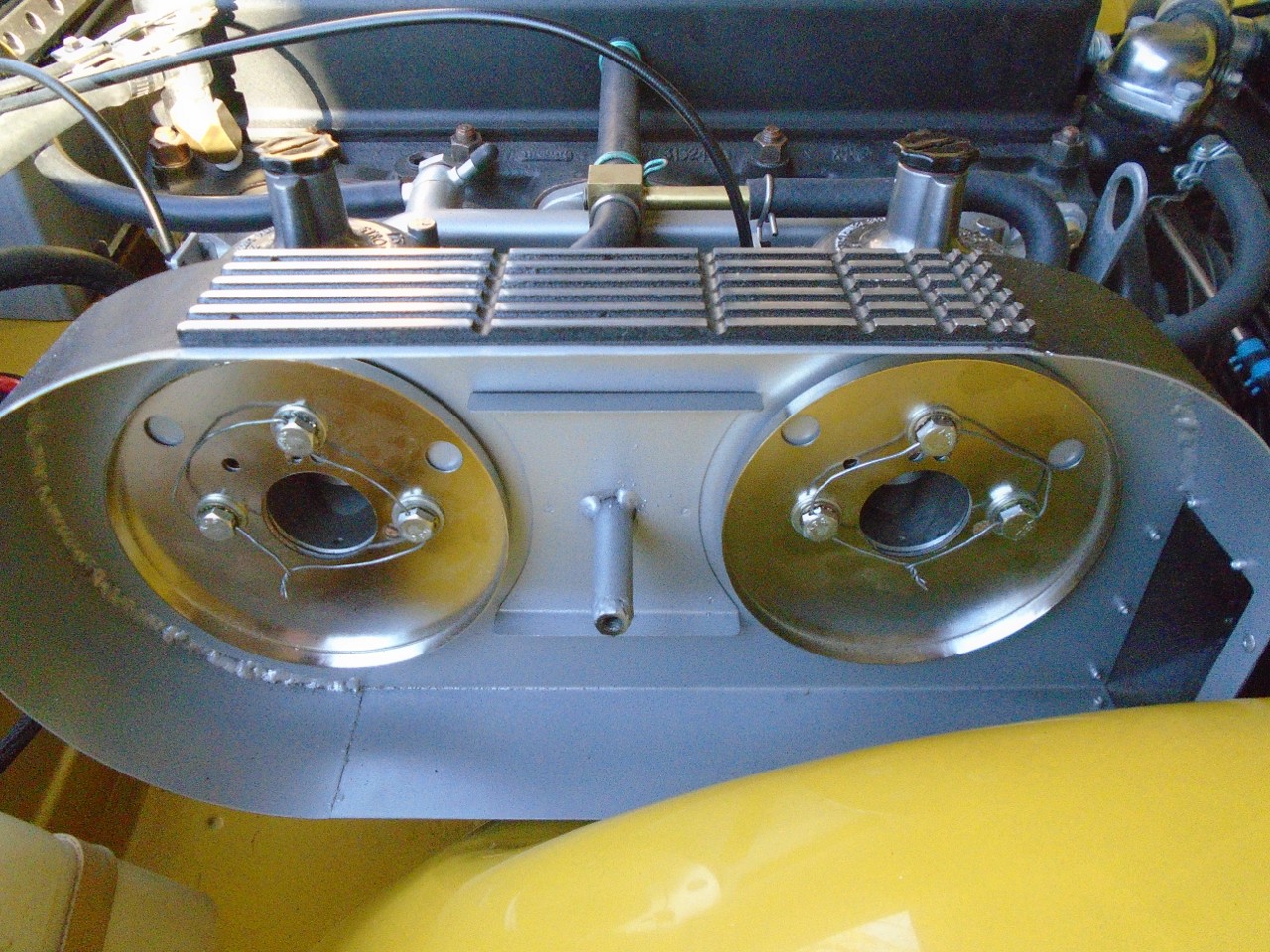
Then
buttoned everything up. The Ramflo foam elements can be run with
or without oiling them. I chose to run them dry.
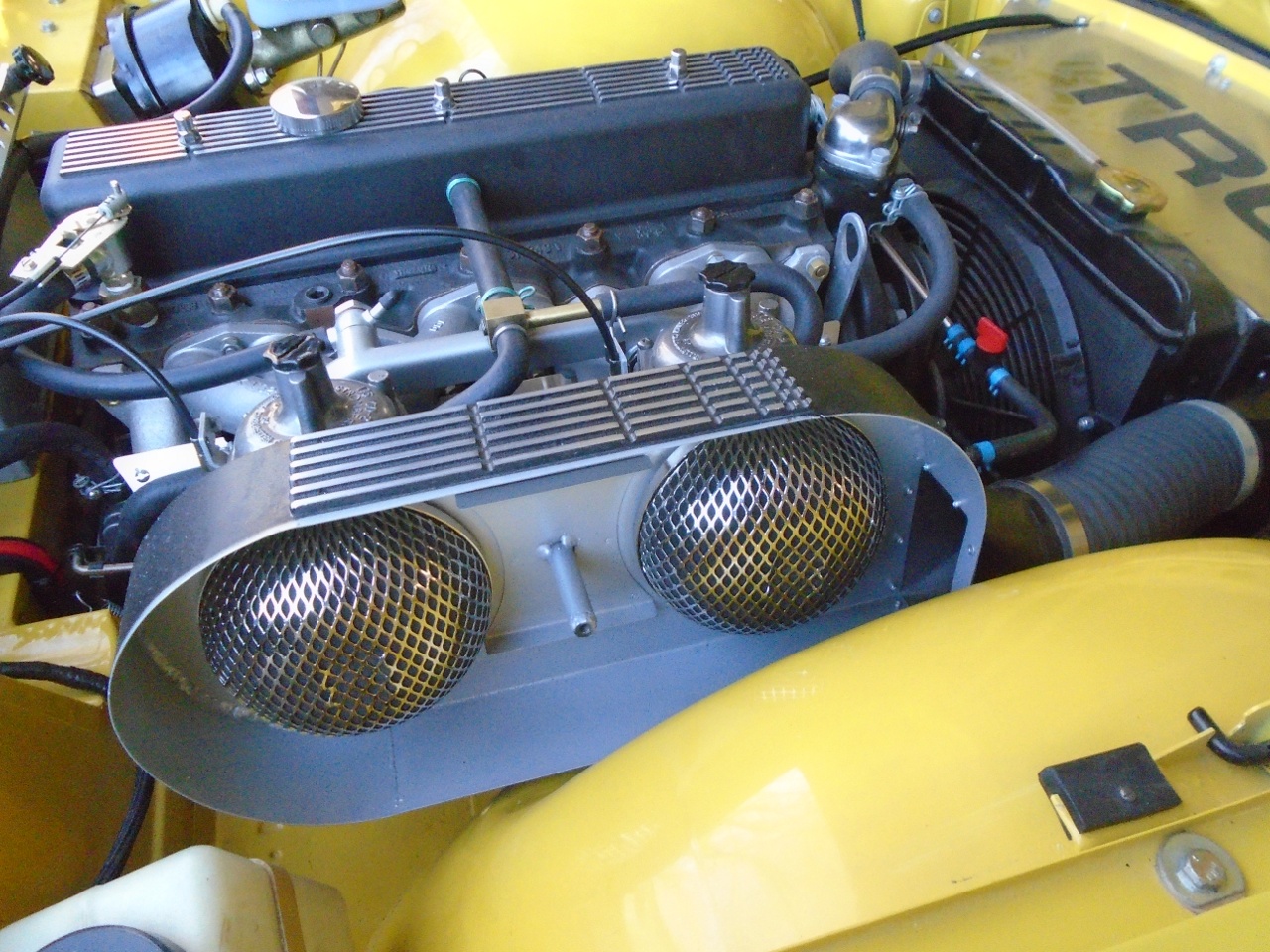
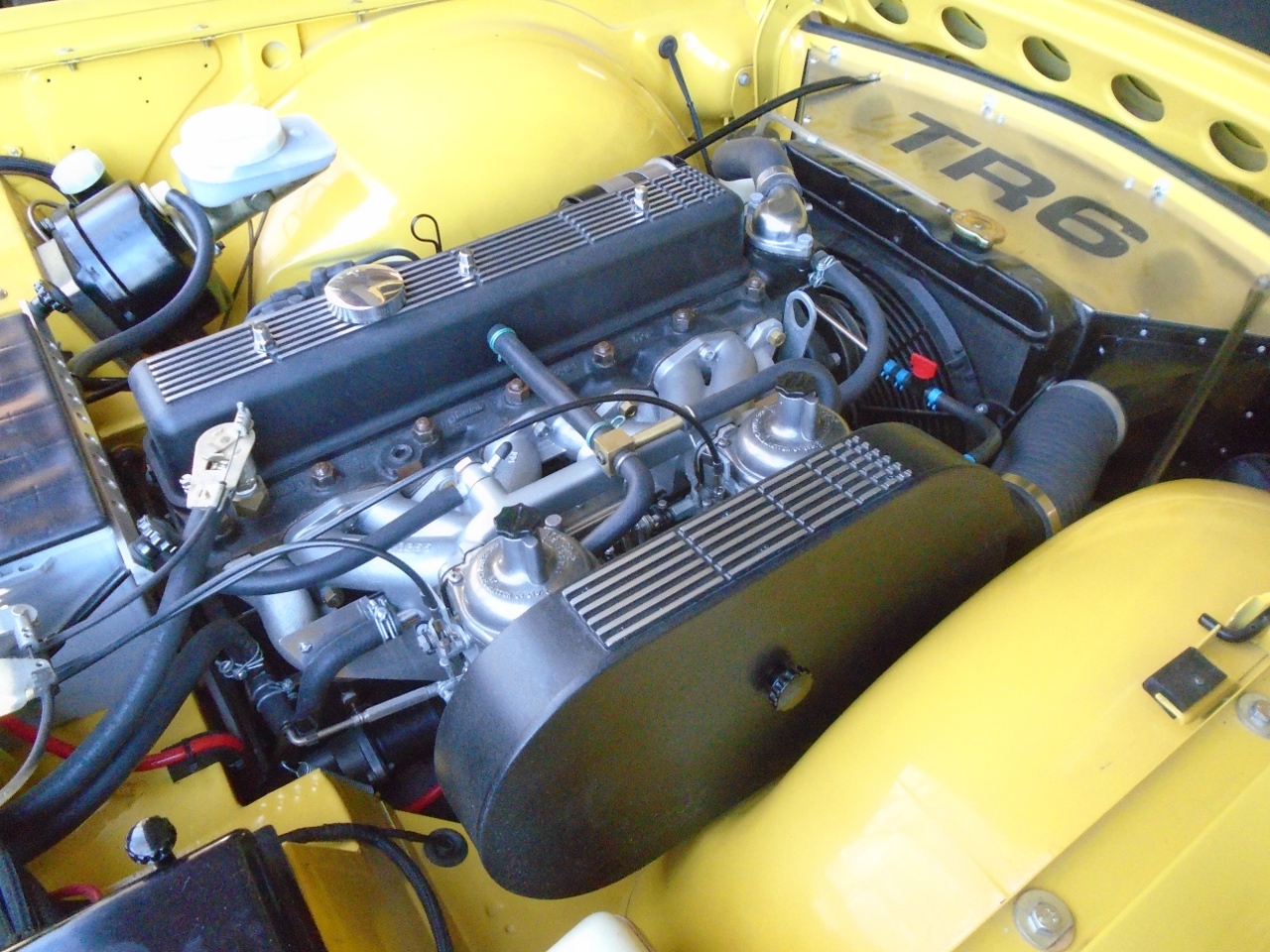
One
last thing--during all of this tuning, I noticed that my voltmeter
seemed to be reading a little lower than I expected. With the
engine running, the system voltage should be at around 14 volts or
more, but it was reading only 12 or so. I had calibrated the
voltmeter, so I trusted it. This implies that the alternator
wasn't working. During some investigation, I also discovered that
the ignition light (which is really more of an alternator light) was
not coming on when the key was in the ignition position, with the
engine not running.
Now,
the ignition light is important becase it provides current to the field
winding of the alternator to help "bootstrap" the alternator until it
can provide its own field current. When the light is on, that
indicates that current is flowing to the field winding through the
light. So, my problem could conceivably be with the ignition
light circuit. To test this, I just pulled the ignition light
wire out of the alternator plug and grounded it. With the key on,
the light lit. This showed that the light circuit was OK, and the
problem was with the alternator, almost certainly in its internal
regulator.
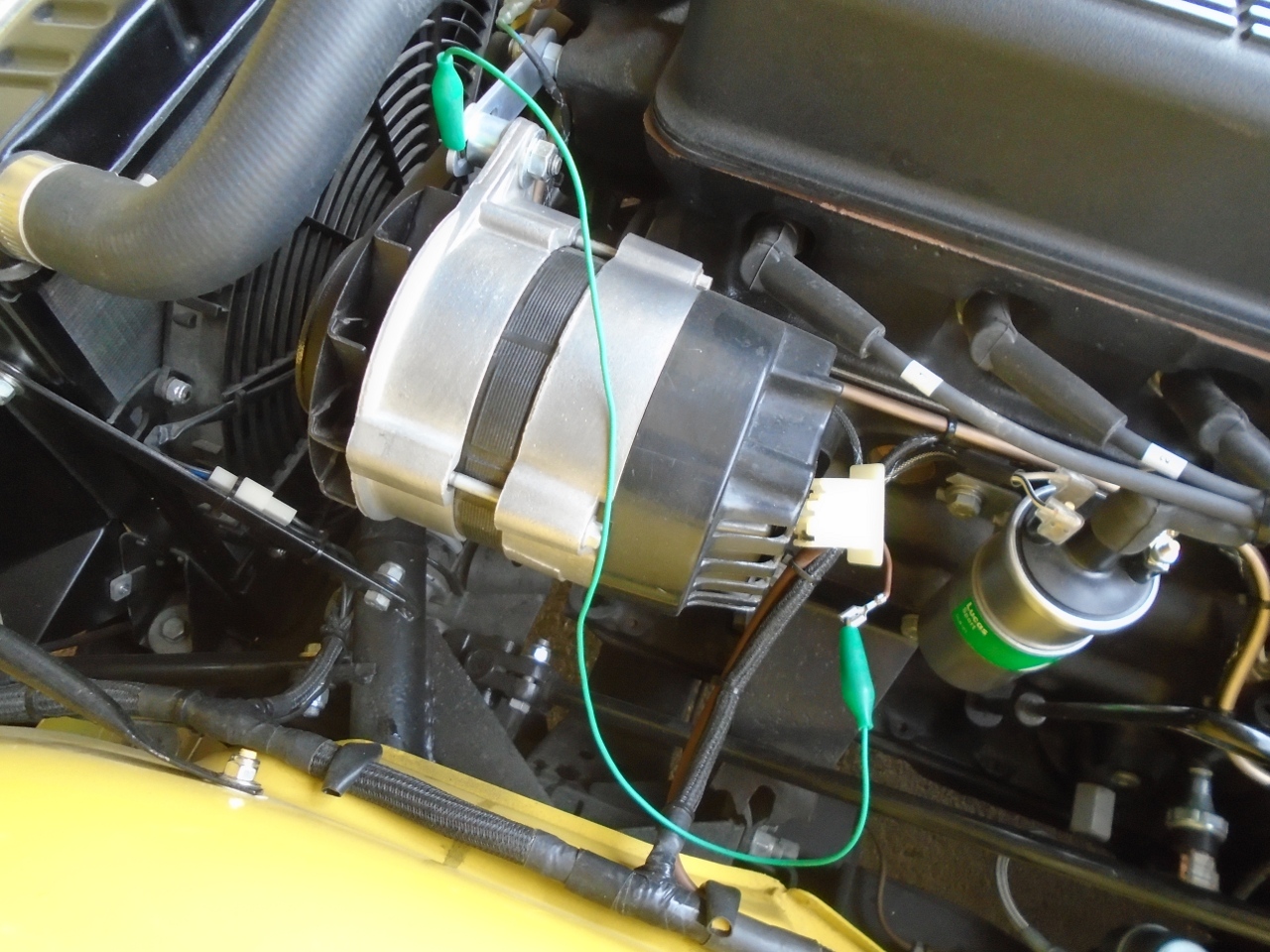
To
save time, I ordered a new 18ACR alternator, and a regulator module.
The alternator came in first. The new unit was advertised as
having 60 amp capacity, while my original was only 40.
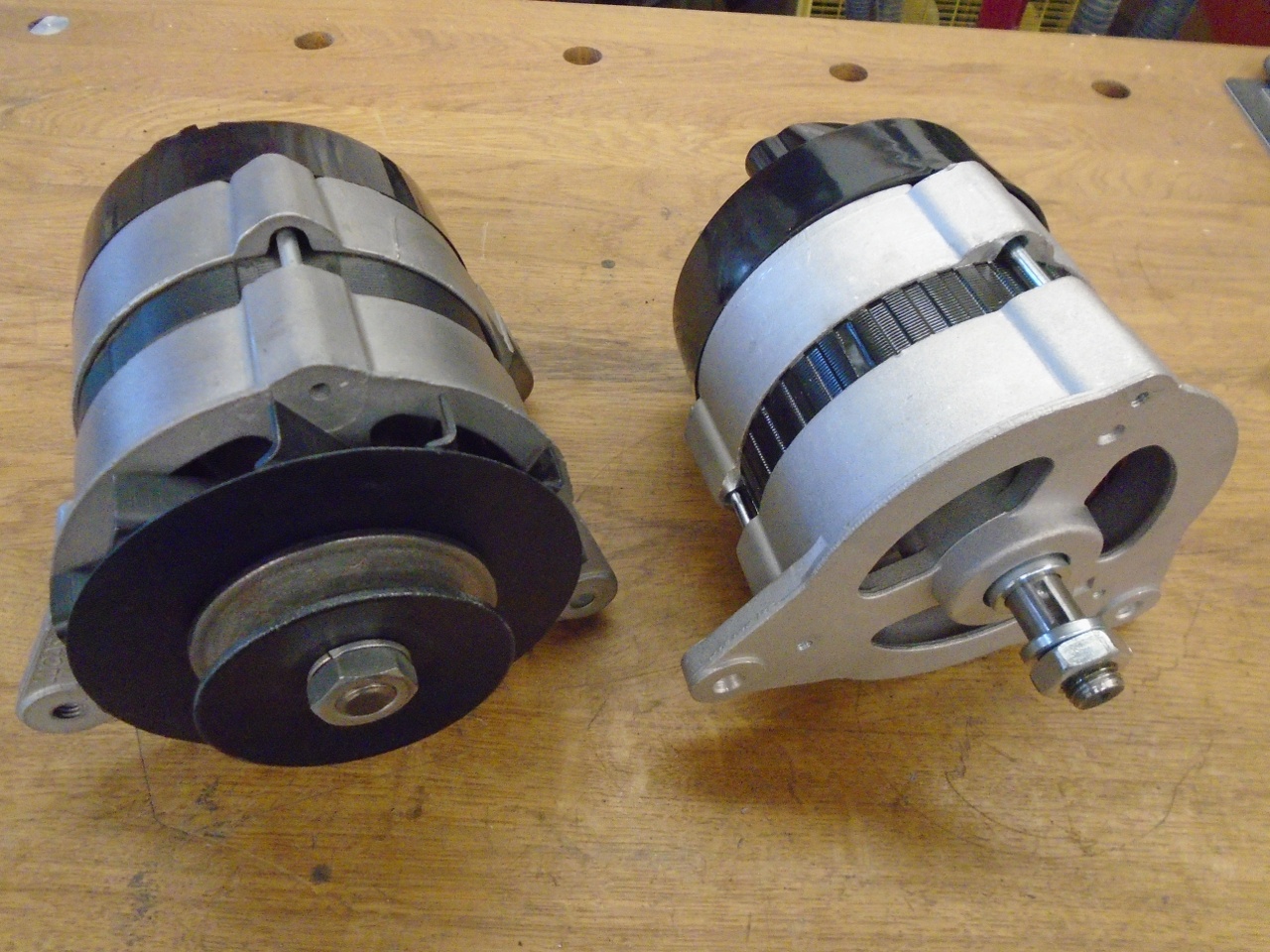
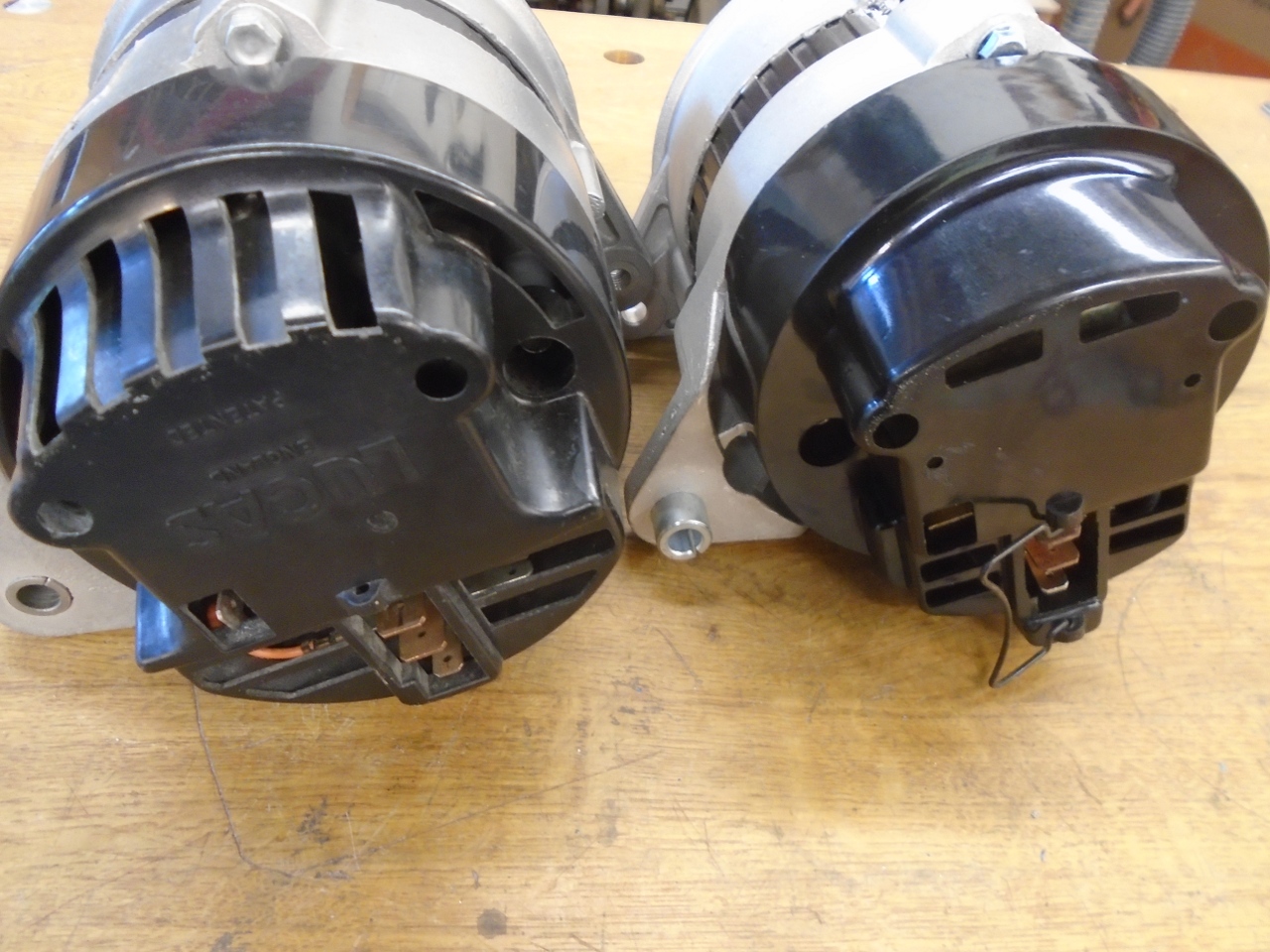
When the regulator comes in, I'll install it in the original alternator, which will become the spare.
One
other last thing. Also during the tuning, the electric fan would
occasionally cycle, as I would expect it to. When I didn't hear
if for a while, I checked and found its 20 amp fuse blown.
The fan's specs say it draws around 13 amps, but there is
probably a surge well over that when it starts. I'll replace the
fuse with a 25 amp and monitor it for a while. I have a light on the dash to tell me when the fan is running.
There are a number of other things on the punch list for the car, but I now consider it roadworthy.
That's all for now. I'm going for a ride.
To my other TR6 pages